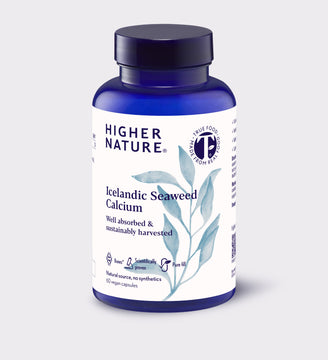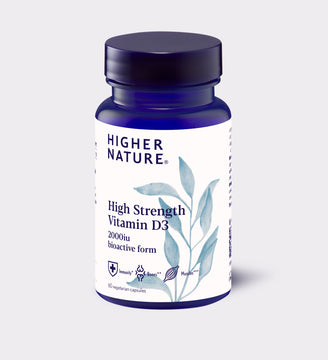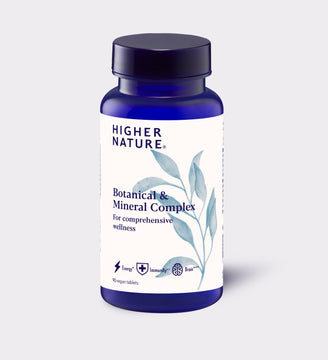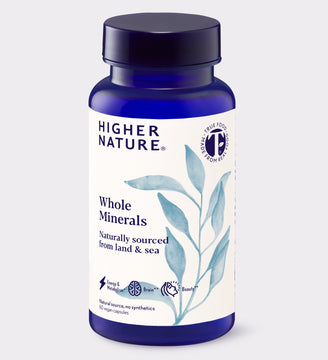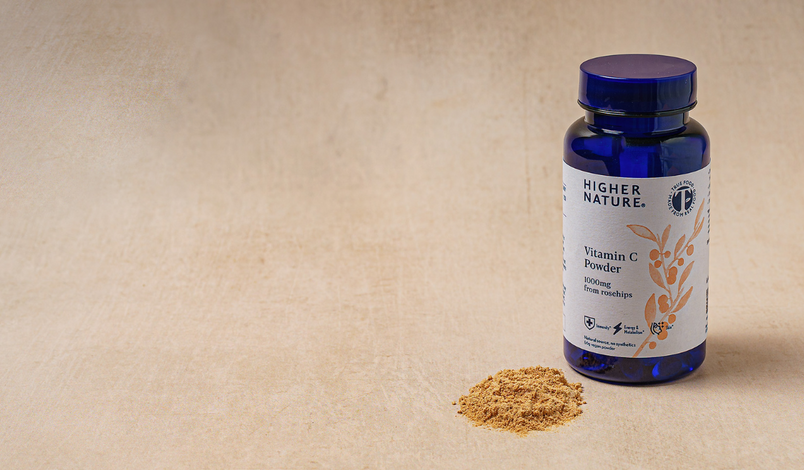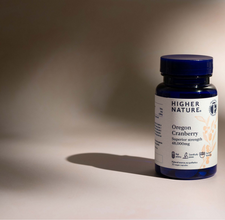
What is the microbiome & how it affect your health?
Higher Nature Nutrition Team
The microbiome is a word we hear a lot of these days, but what exactly does it mean?
Your body is quite literally teeming with bacteria. They live on your skin, in your mouth, nose, respiratory tract, urogenital tract and of course your gut - they are collectively known as your microbiome. You are in essence a walking, talking ecosystem.
According to the Human Microbiome Project, there are currently around 1300 identified strains within the microbiome, but where do they come from? What do they do? And what is their relevance in particular to female health?
Where it all starts
We are born more or less sterile, but our first encounter with microbes is during birth when we pick up our mother's microbiota from the birth canal. A young infant will have around 100 different species of microbes in their microbiome, but by the age of three our interaction with our environment has increased this amount to over 1000, roughly that of an adult. Our microbiome continues to shift over the course of our lives, particularly around changes such as puberty, pregnancy and menopause, but also in response to illness, stress and diet. Our genes also influence our microbiome, as does the climate we live in, our occupation, our gender and our hygiene.
How do our gut microbes keep us healthy?
Some 100 trillion bacteria populate the human gut, a number that is 10 times greater than the number of cells in the human body.
These are responsible for a whole host of roles including:
- Energy harvesting from food
- Releasing compounds that reduce inflammation
- Keeping the cells in the intestinal lining well connected
- Regulating appetite and weight management
- Influencing how the body responds to insulin
- Preventing toxins from passing into the blood stream and sending chemical messages to the brain.
When we think of our genome, or our genetic material, the Human Microbiome Project suggests we should actually think about it in terms of the amalgam of our own genes and the genes of our microbes, so intertwined are they to our health.
Female urinary tract health
The urinary tract is also populated by a complex network of microbes. Any imbalance in this microbial population increases the risk of lower urinary tract symptoms.
Women have more than a 50% risk over their lifetime of developing a urinary tract infection (UTI) and 20-30% will experience recurrent UTIs.
Bacteria enter the urinary tract via the urethra and UTIs are more common in women than men as the urethra is shorter, so bacteria travel a shorter distance to reach the bladder. UTIs can occur in the bladder, urethra or kidneys.
The majority of urinary tract infections are caused by harmful bacteria, commonly Escherichia coli (E.coli), overwhelming the body’s own urinary tract defences.
The unpleasant symptoms this causes may include a strong and frequent urge to urinate and a burning sensation on urinating.
The bladder infection cystitis may also cause pressure and cramping in the lower back and abdomen and a low fever. Cystitis can occur at any stage of life, including post-menopause.
Pregnancy
Changes in the urinary tract in pregnancy make UTIs more common and when one does occur it is more likely to migrate to the kidneys which can be harmful to both mother and baby.
An ‘at-a-glance’ guide of the strains commonly used for female health:
| Lactobacillus acidophilus | Lactobacillus reuteri | Lactobacillus rhamnosus | Lactobacillus gasseri | Bifidobacterium longum |
|
Supports a healthy immune system |
Naturally resides in gastrointestinal tract, urinary tract, skin, and breast milk | Naturally resides in vaginal flora | Naturally resides in the vaginal flora and digestive tract | May help to prevent wind |
| Naturally resides in gastrointestinal tract, mouth and female genitals | Can help to support healthy flora ready for birth | Supports a healthy immune system (immuno-supportive antibody sIgA) | Can also be used during pregnancy to support healthy flora | May be helpful during and after antibiotics |
| Helps to balance normal cholesterol levels | Supports baby’s immune system during natural birth | Can support healthy flora during pregnancy | Supports healthy immunity | Inhibits the growth of bad bacteria. |
| Support healthy vaginal flora | Supports a healthy immune system | Useful after or alongside conventional anti-fungal thrush treatment | Inhibits the growth of bad bacteria | |
| Supports the health of the urinary tract | Helps to balance normal cholesterol levels | May support weight loss | ||
| Supports during and after antibiotics | Supports healthy vitamin D levels | May lessen menstrual pain | ||
| Supports healthy flora during pregnancy (for mother and baby) | Inhibits the growth of bad bacteria | |||
| Supports healthy digestion and bowel movements | ||||
| May be useful to take during a candida infection | ||||
| Inhibits the growth of bad bacteria |
Bifidobacterium strains colonise the lower bowel, the flora of which are closely linked to the urinary system specifically in women. When the delicate balance of flora is disrupted women can experience problems such as thrush and cystitis.

